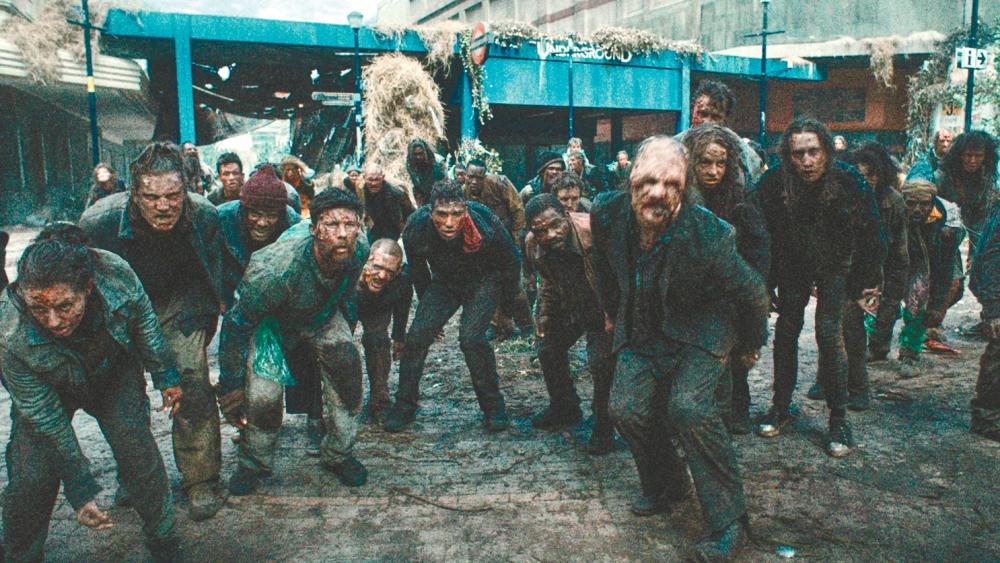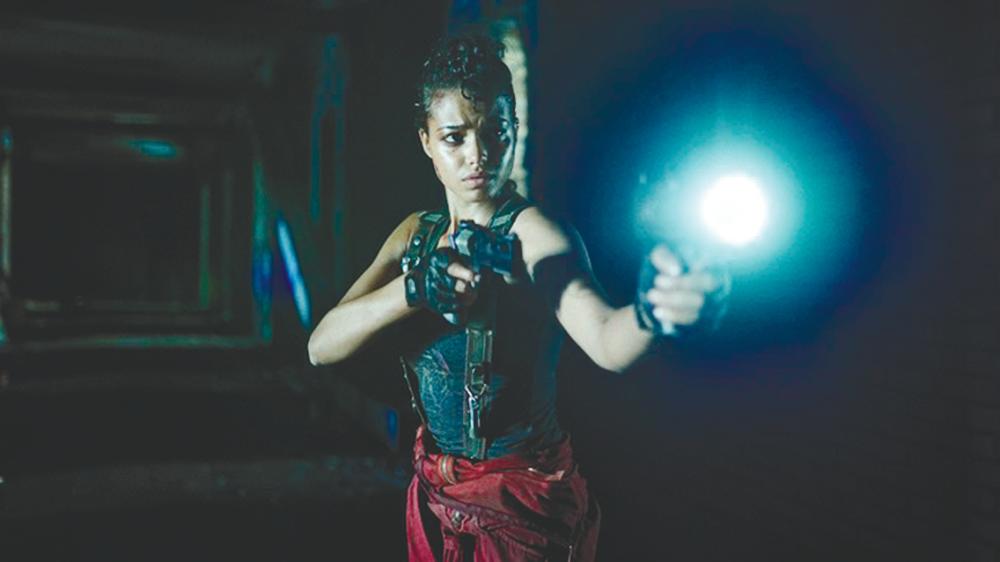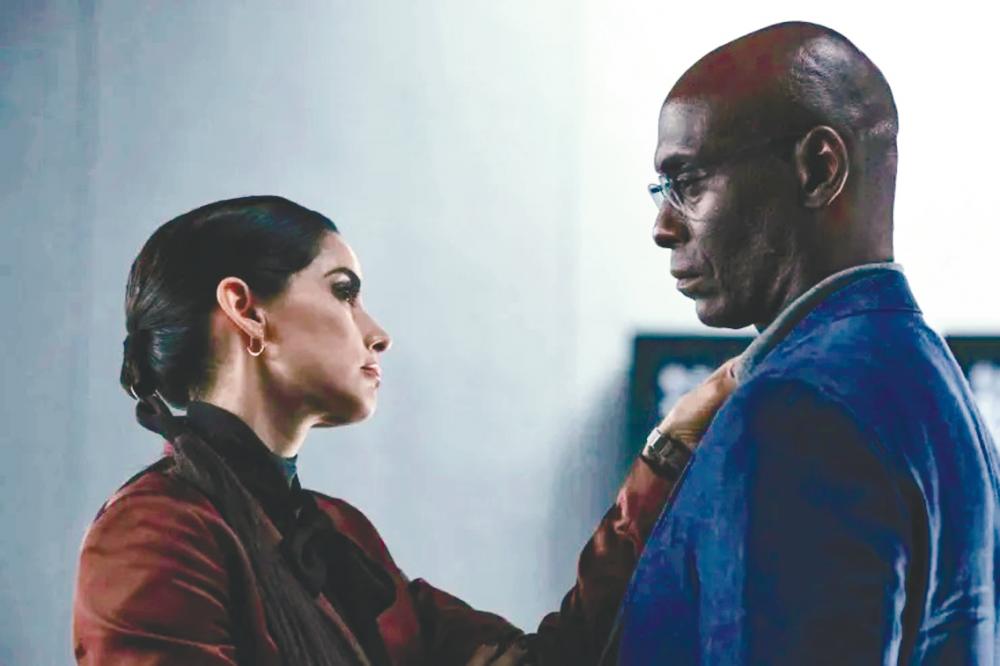IS nothing sacred anymore? If Netflix remade Star Wars: Episode V – The Empire Strikes Back, I’d suspect it would be a series that would be one half a teen drama about teenagers in high school finding out they can move things with their minds.
The other half would be about the main character Luke Skywalker finding out that the teacher who has been bullying him and his sister Leia is actually their father. Also, Leia would now be a vegan.
That is what Netflix’s Resident Evil series is – a bastardisation of the Resident Evil videogame franchise.
Loosely based on the events and characters in the video games, Netflix’s Resident Evil focuses on two timelines revolving around the same characters.
In the first, taking place in the early 2020s, Albert Wesker (Lance Reddick) and his twin daughters, Billie (Siena Agudong) and Jade (Tamara Smart), grapple with not only dark secrets behind the twins’ birth, but also Wesker’s mysterious past.
At the same time, Wesker’s employers, the infamous Umbrella Corporation, are up to their usual unethical, bordering on war crime, human rights infringing business and science practices. This time, it’s in the form of a new drug called Joy, containing trace amounts of the T-virus that has been responsible for turning humans into zombies in every past Resident Evil media.
The second timeline takes place about a decade in the future, with an adult Jade attempting to understand the mutation of the T-virus in a world that has collapsed due to a zombie outbreak.
That’s about it. Out of every character from the source material, Wesker is the only ‘familiar’ one, but the blonde, white video game character is now a bald, Black man in the Netflix version.
The “race-change” isn’t an issue, especially as Lance Reddick – a heavyweight actor – essentially carries the entire season on his back because everything else is truly, undeniably and unequivocally garbage.

Actual dumpster fire
Other than Wesker, the general idea of Umbrella and the T-virus, Resident Evil turns the idea of “taking creative liberty” into a joke.
On one hand, everything else is new and demonstrates what some people want, which is creativity. On the other hand, series creator Andrew Dabb “dabs” on the idea of actually being creative due to poor writing behind not only the characters, but also the general narrative.
Everything bad that happens in Resident Evil stems from the decisions made by Jade; so much so, that it becomes unbearable before the first episode even ends.
For instance, Jade is unapologetically a vegan, and the show repeatedly brings it up.
Due to being a vegan, Jade’s love of animals leads her to breaking into her father’s (and Umbrella’s) laboratory to take pictures of the animals being tested on.

Due to also being a terrible sister, she drags Billie along, and one dumb thing snowballs into a bigger, dumber plot thing, and Billie is bitten by a zombie dog, while Wesker has to stage a cover-up to protect his daughters from Umbrella.
All of this happens in the first episode, and Jade is supposed to be the lead character and hero the audience must root for, as the entire season mainly follows both young Jade and older Jade (played by Ella Balinska).
Billie’s development isn’t as bad as Jade’s, but at some points, the teenage melodrama of her “not fitting in” at school became overbearing. Both these characters’ actions are rooted in idiocy despite ironically being “genetically-modified” to be superior to normal humans.
On the overall episodic structure, Netflix’s Resident Evil is alarmingly bad. The constant back-and-forth between the past and present timelines have no logic behind the intercutting, and more often than not, it breaks the pacing of what’s happening on either timeline.
Such as the episode where the Wesker twins go on a one-hour long “treasure hunt” in their house, while Umbrella is hunting them down.
The overall story makes no sense as well, and the season then ends on a cliffhanger, with multiple unexplained story threads. Were they expecting a second season?

Resident Evil, only in name
Ultimately, Netflix’s adaptation feels like they wanted to make an unrelated zombie series, but due to the original screenplay being more generic and as bland than the staple white people diet, they took the most common “words” from a Resident Evil Wikipedia page and wrote an updated screenplay based around rudimentary understanding of those loaned words.
In broad strokes, general audiences on Netflix are not going to find anything interesting in the video game, while the series – wearing the flayed skin of the Resident Evil videogames – completely alienates the in-built videogame fanbase. Who was this series made for? Netflix stakeholders? Capcom stakeholders?
Paul W.S. Anderson’s nepotism-fueled Resident Evil film franchise where he shoved his wife, Milla Jovovich in each film as the lead character were all bad, but there was entertainment value behind the explosions and gore shlock-fest of each film. There’s none of that here.
A renewal for a second season would actually be surprising, because as it stands, Netflix’s Resident Evil’s future is bound to be flushed down the toilet like last year’s equally maligned Netflix adaptation, Cowboy Bebop.
If you are looking forward to Netflix’s upcoming Avatar: The Last Airbender series, just abandon all hope henceforth.









